Dr. Will Dabbs brings us up to speed on this pivotal Cold War plane.
Iwas president of my medical school class.
Dont be impressed with that.
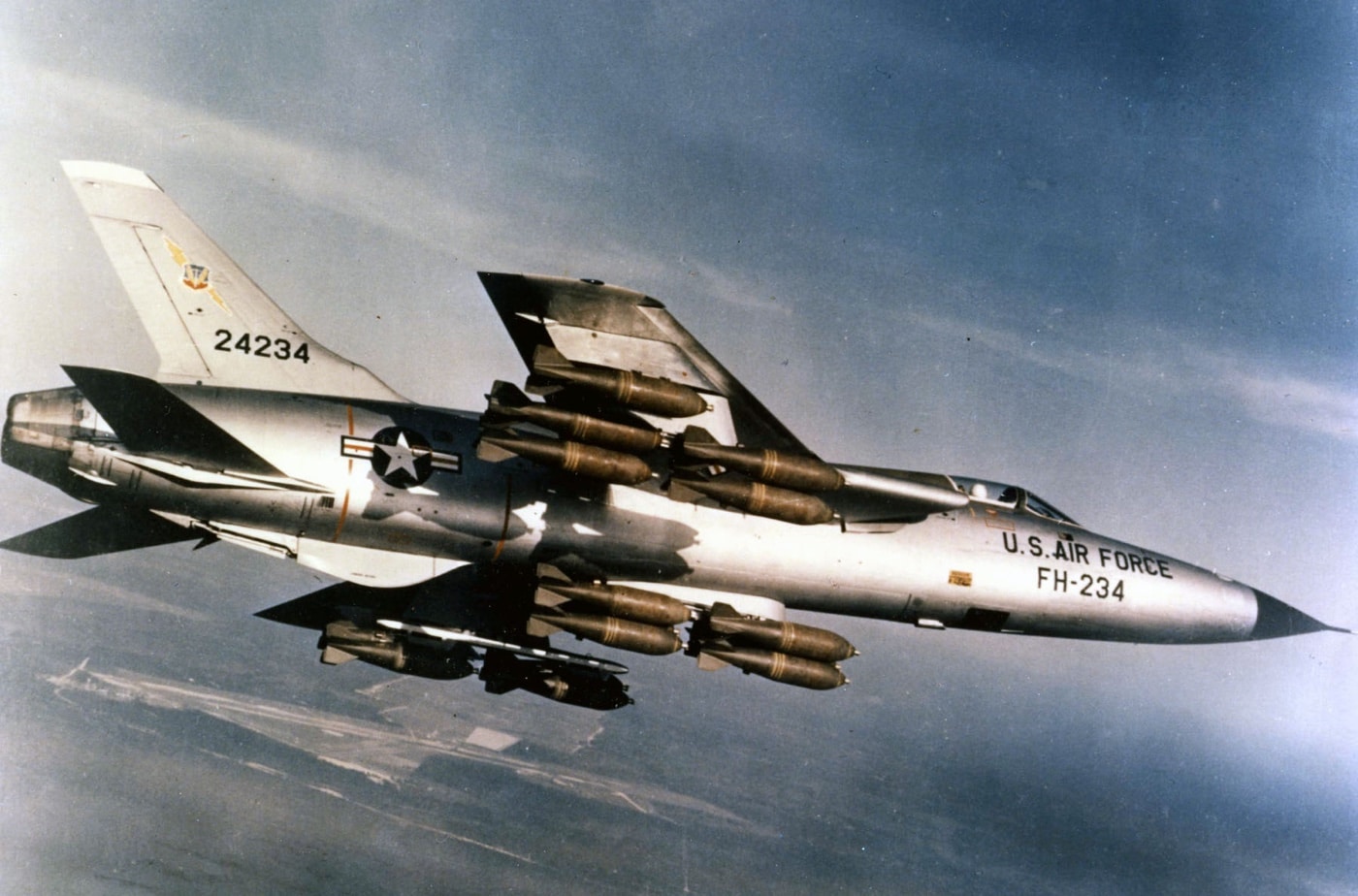
A Republic F-105D Thunderchief in flight with a full bomb load of M117 750 lb bombs. Image: U.S.A.F.
It simply means I ran slower than everyone else when they announced that somebody had to do it.
I was an idiot for accepting the job.
However, it did get me a free lunch once a month with the hospital leadership.
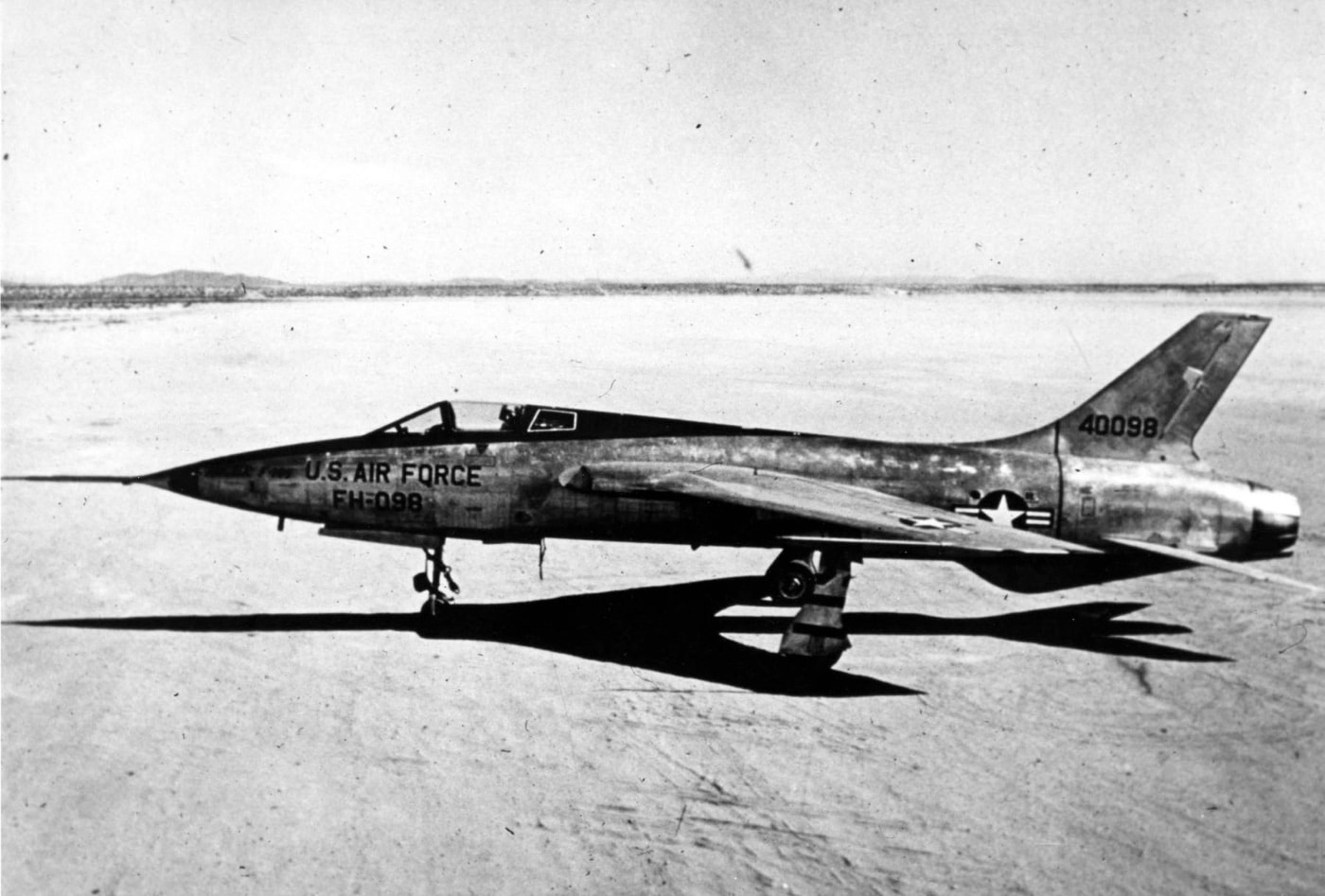
Shown is a Republic YF-105A prototype (SN 54-0098) during evaluations, circa 1955. Image: U.S.A.F.
Our monthly confabs were typically fairly dry affairs that orbited around hospital expansions and arcane administrative challenges.
I was a former Army helicopter pilot myself.
The gulf between Army helicopters and Air force strike jets was broad, but we were both military aviators.
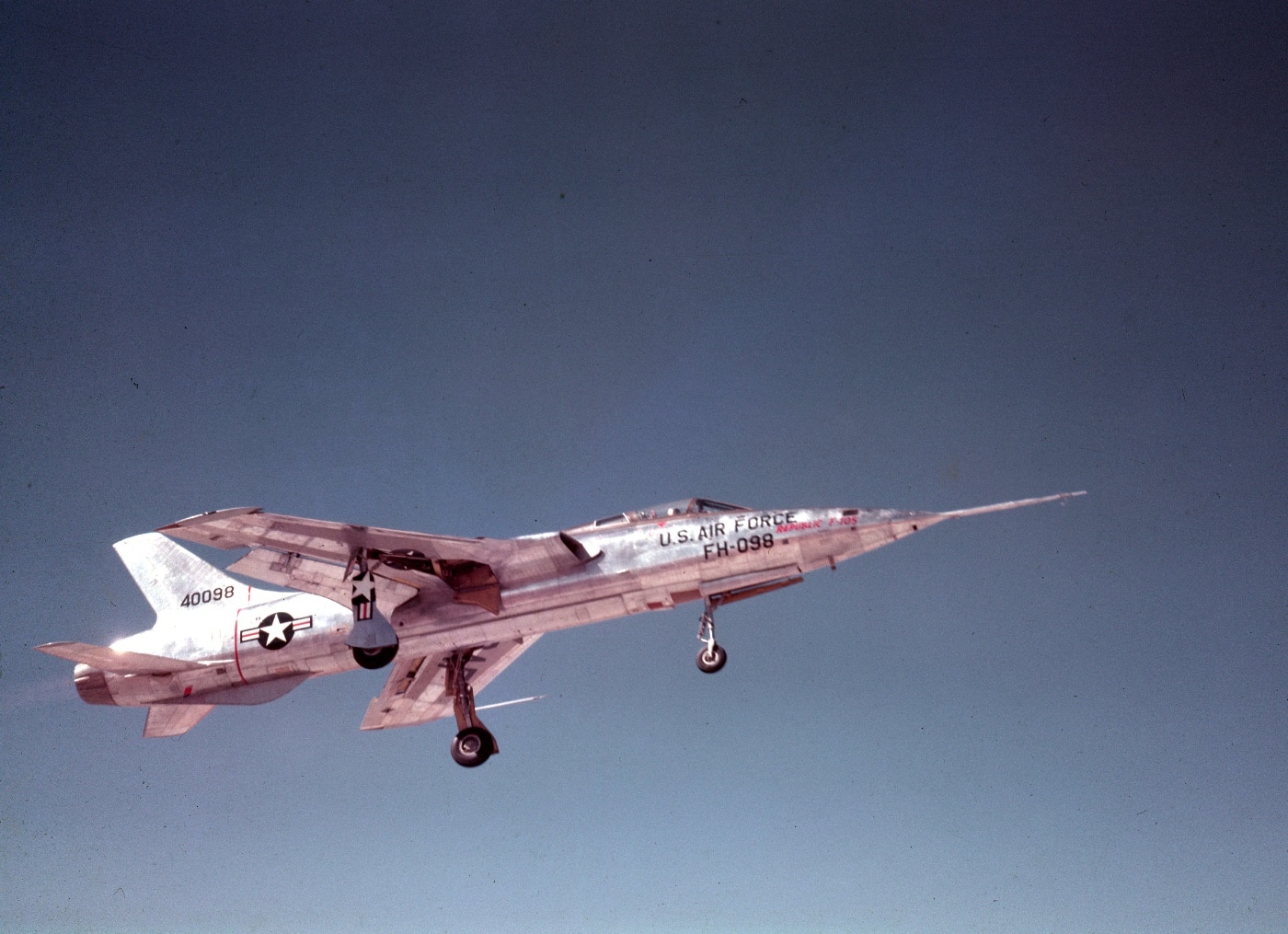
On October 31, 1955, a Republic F-105 Thunderchief test plane takes off. The first-ever flight of the F-105 was several days prior on October 22. Image: U.S.A.F.
That struck a spark that blossomed into a friendship.
The crews called the F-105 Thunderchief the Thud.
The term was originally birthed in derision but ultimately came to embody a great deal of affection.
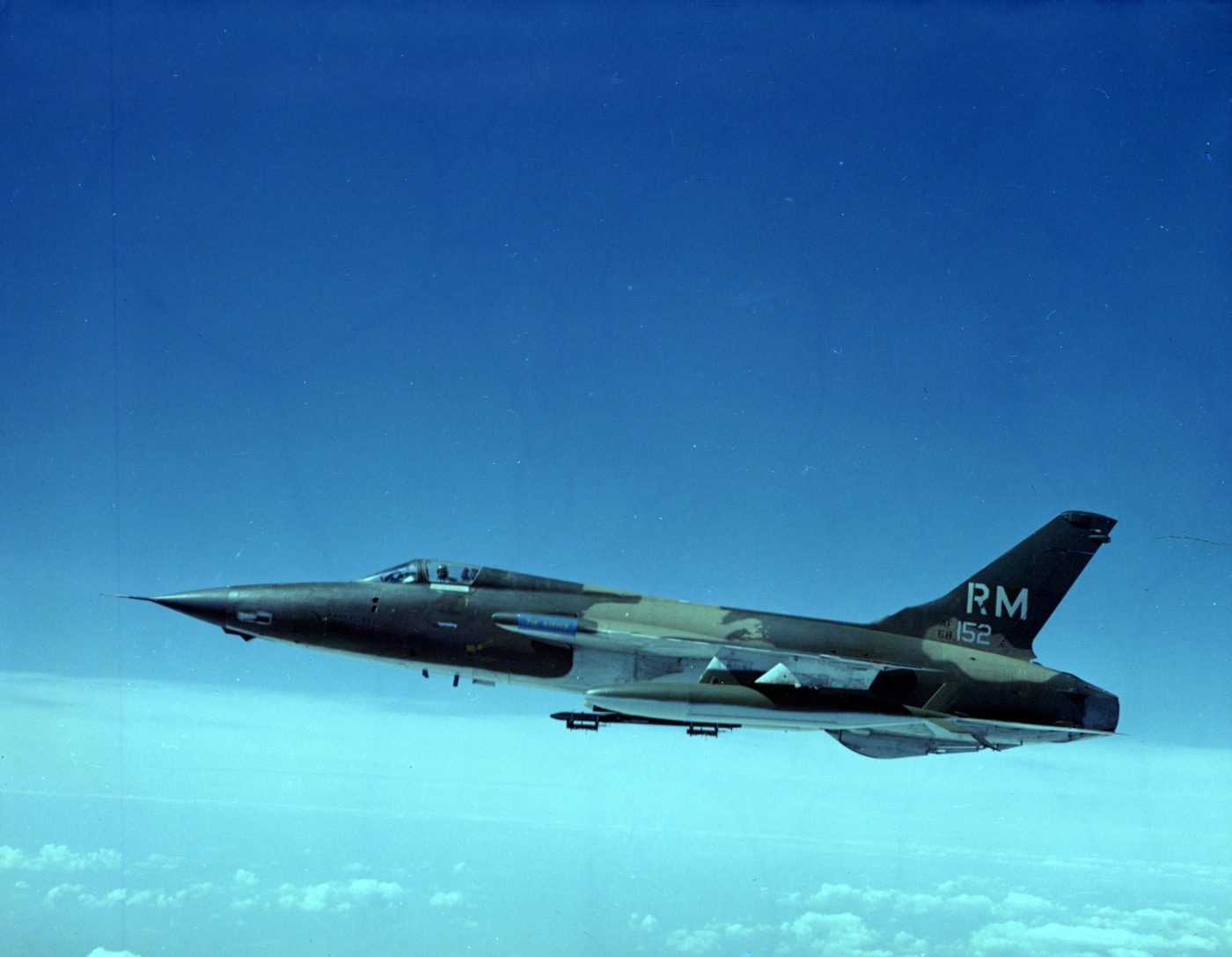
An air-to-air left side view of a F-105 Thunderchief with the 355th Tactical Fighter Wing. The photo was taken over Southeast Asia in February 1970. Image: Airman 1st Class Steven A. Wilson/U.S.A.F.
The Thud was a curiously enigmatic airplane.
The man described the Thud fondly.
He also said there was a bladder in the plane that offered cold drinking water for the egress.
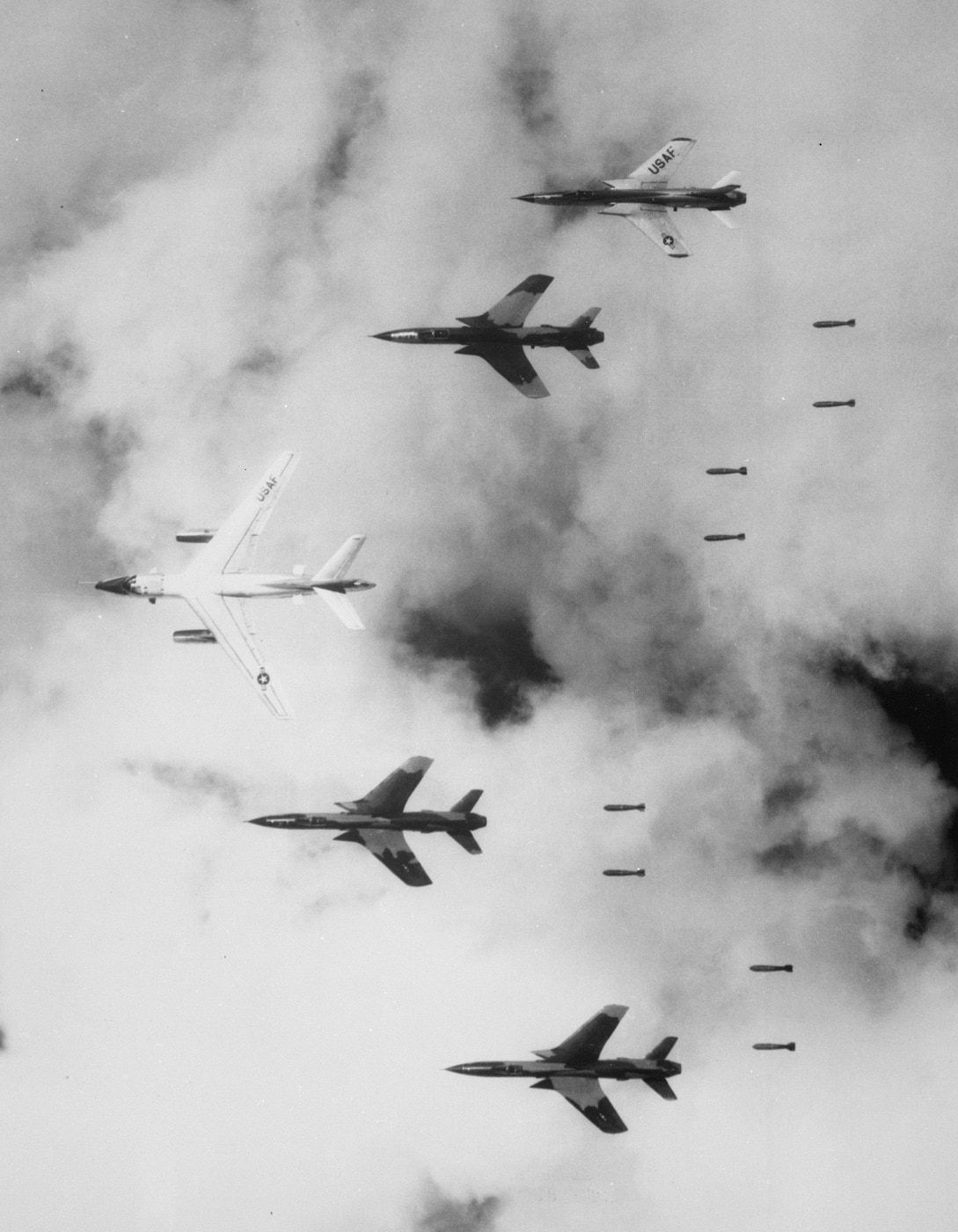
Flying under radar control with a B-66 Destroyer in the lead position, four F-105 Thunderchiefs bomb a military target through low clouds over North Vietnam on July 14, 1966. Image: NARA
He clearly thought that was one of the most redeeming aspects of the design.
The Thud Mission
The F-105 first flew in 1955.
It was designed as a high-speed nuclear attack plane.
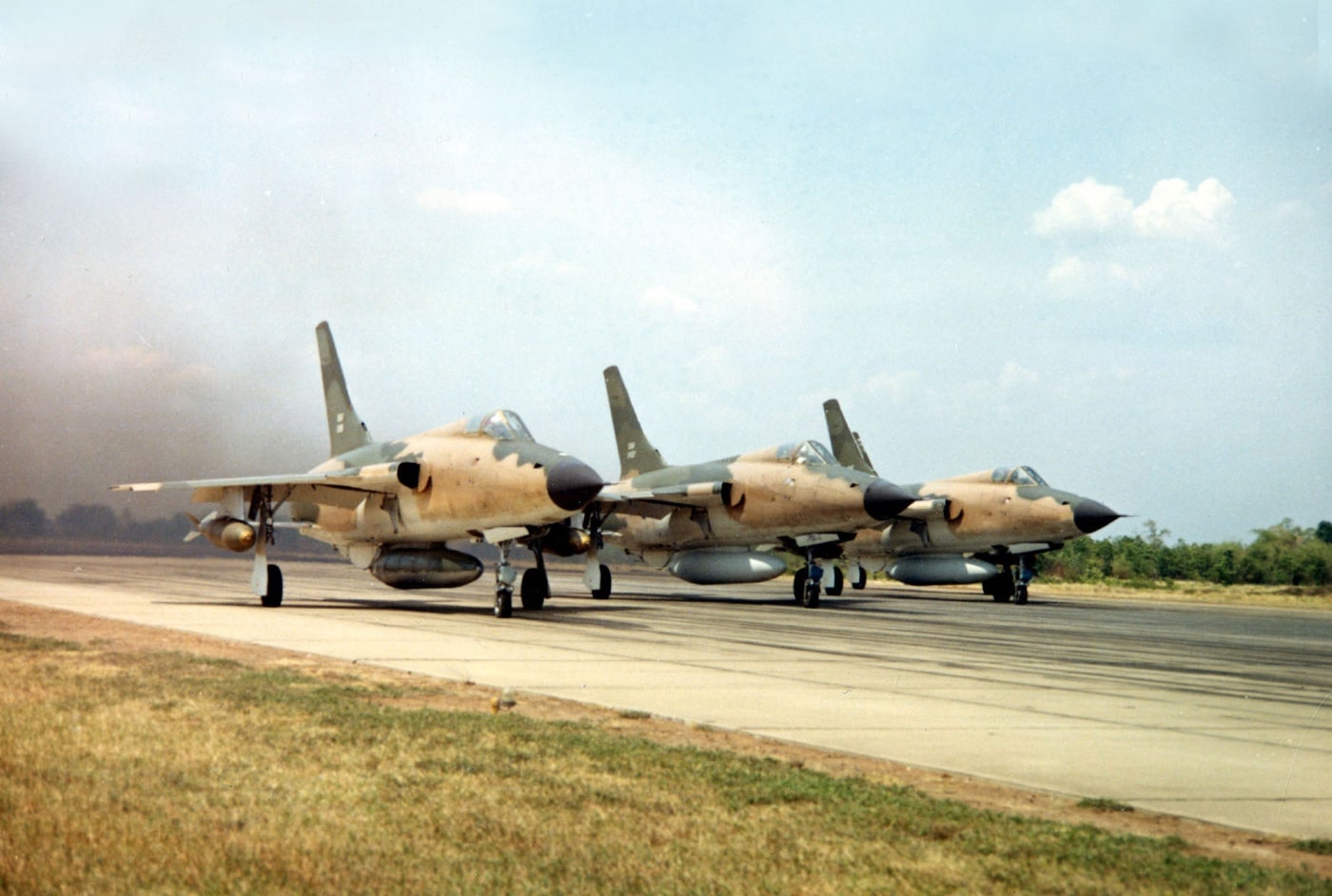
Three F-105 fighter bombers take off on a mission to bomb North Vietnam in 1966. Image: U.S.A.F.
A typical bomb load for the F-105D single seat Thunderchief in Vietnam was 16 750-lb.
bombs mounted on five external hardpoints.
These missions could be launched using small numbers of aircraft in a direct attack mode.
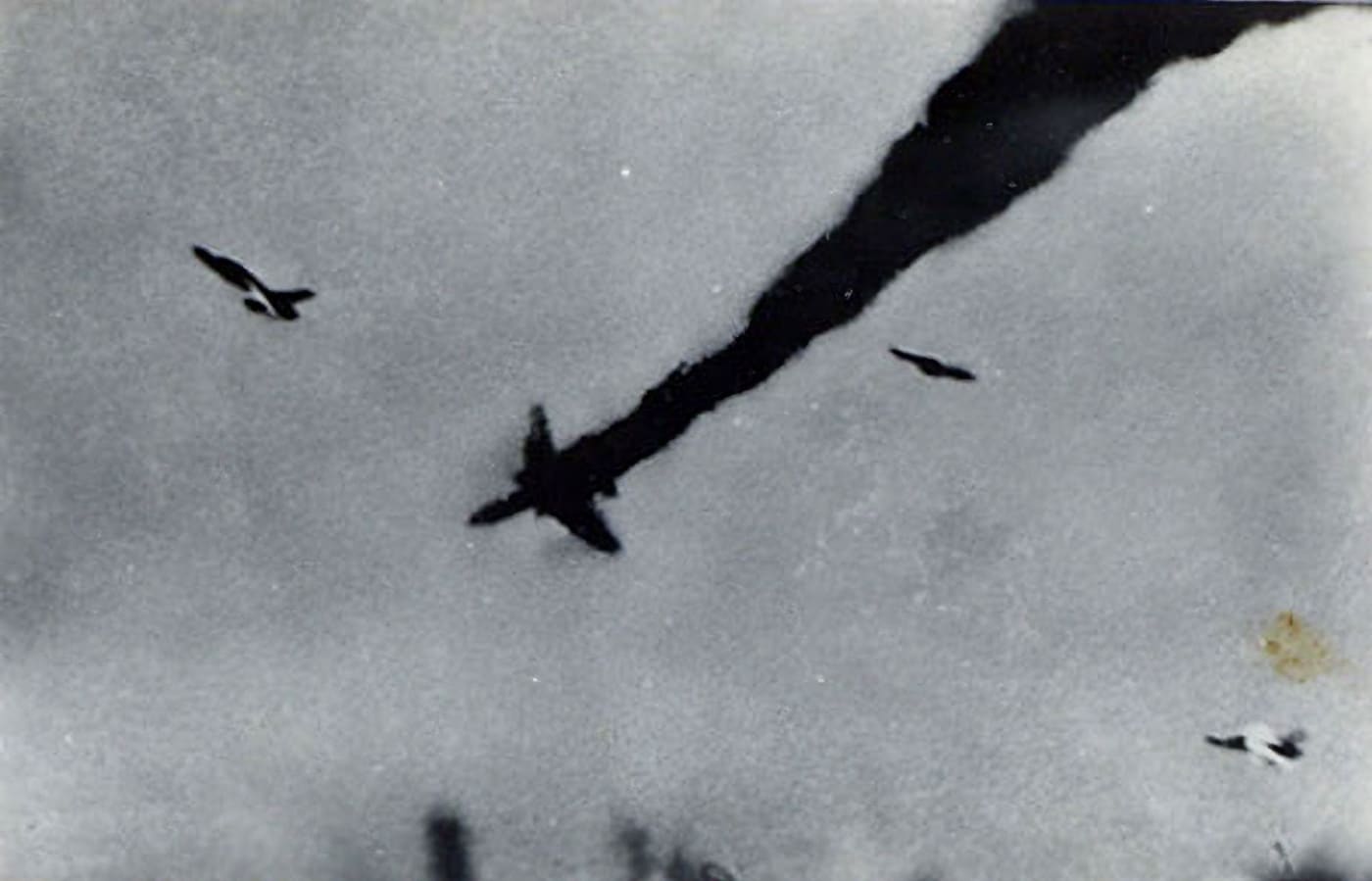
A Republic F-105D Thunderchief is shot down over North Vietnam by a Soviet S-75 Dvina surface-to-air missile. Image: Е. И. Богуном (CC-BY-SA 3.0)
Regardless of the method of attack, the Thuds mission profile was profoundly dangerous.
MiGs were a concern, but the real threat was AAA and SAMs.
AAA stands for anti-aircraft artillery, and SAM is surface-to-air missile.
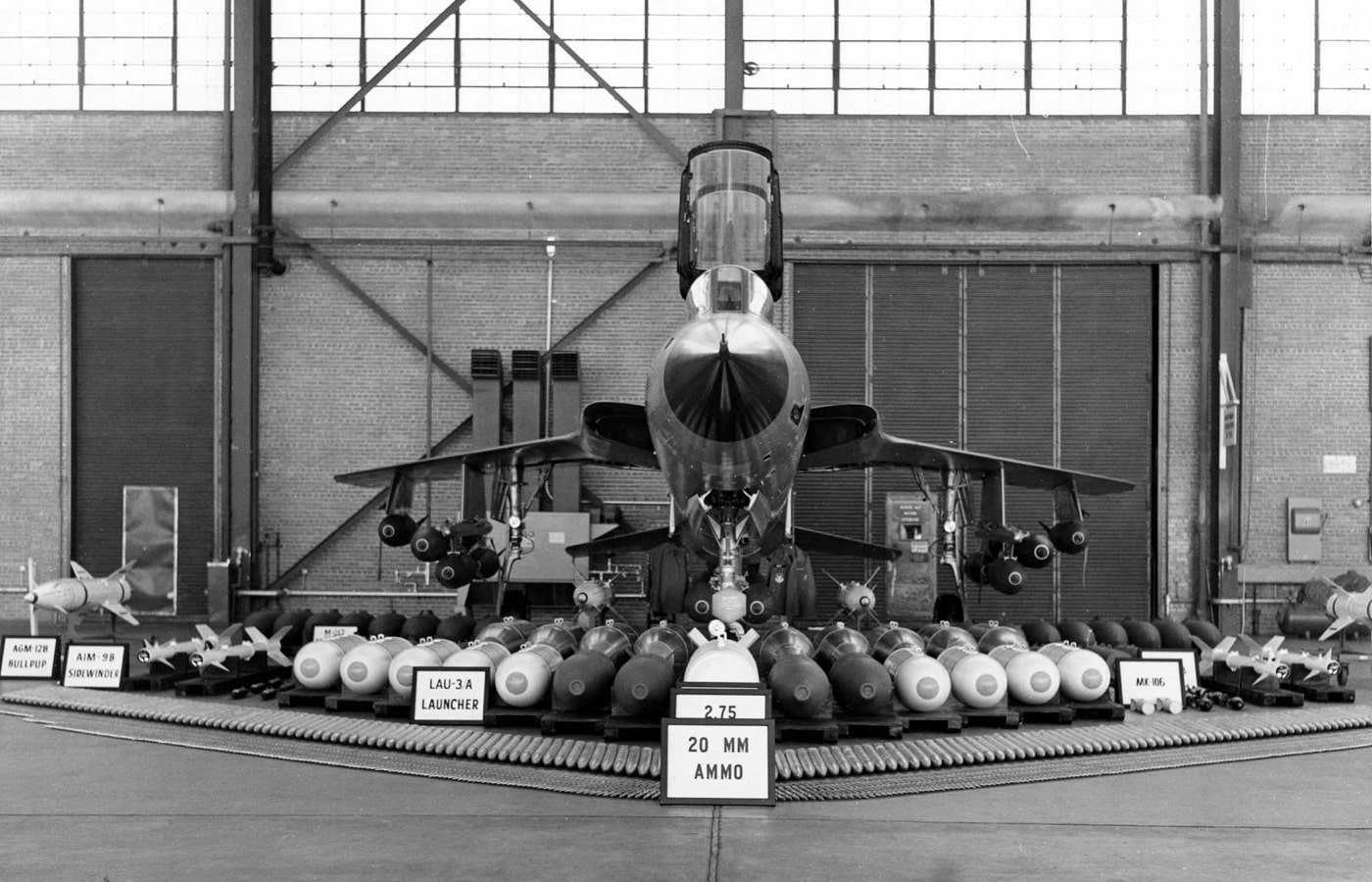
A Republic F-105F Thunderchief with armament layout including 20 mm cannon rounds, 2.75 in. rockets, AGM-12 Bullpup and AIM-9B Sidewinder missiles and more. Image: U.S.A.F.
SA-2 Guideline SAMs were the apex predators.
My buddy said they looked like flaming telephone poles.
Subsequent F-105F and G-models were two-seat versions used as Wild Weasels.
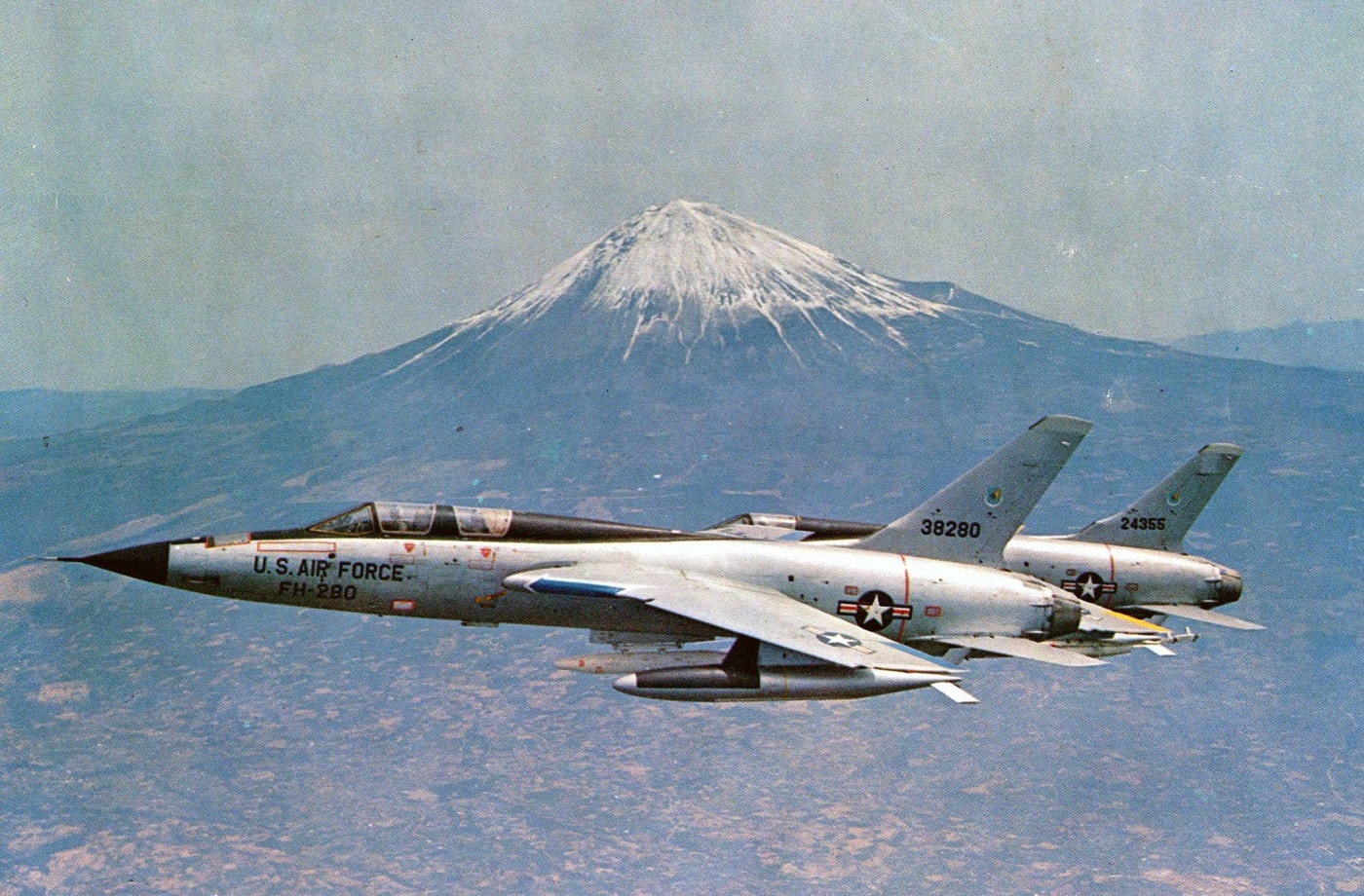
Two Republic F-105 Thunderchiefs, an F-105F and an F-105D fly by Mt. Fuji in Japan. Image: U.S.A.F.
Wild Weasel is the term used by the Air Force to describe counter-SAM missions.
These specialized aircraft moved in ahead of a strike package carrying HARM (High-Speed Anti-Radiation) missiles.
The AGM-45 Shrike was the most common HARM weapon.
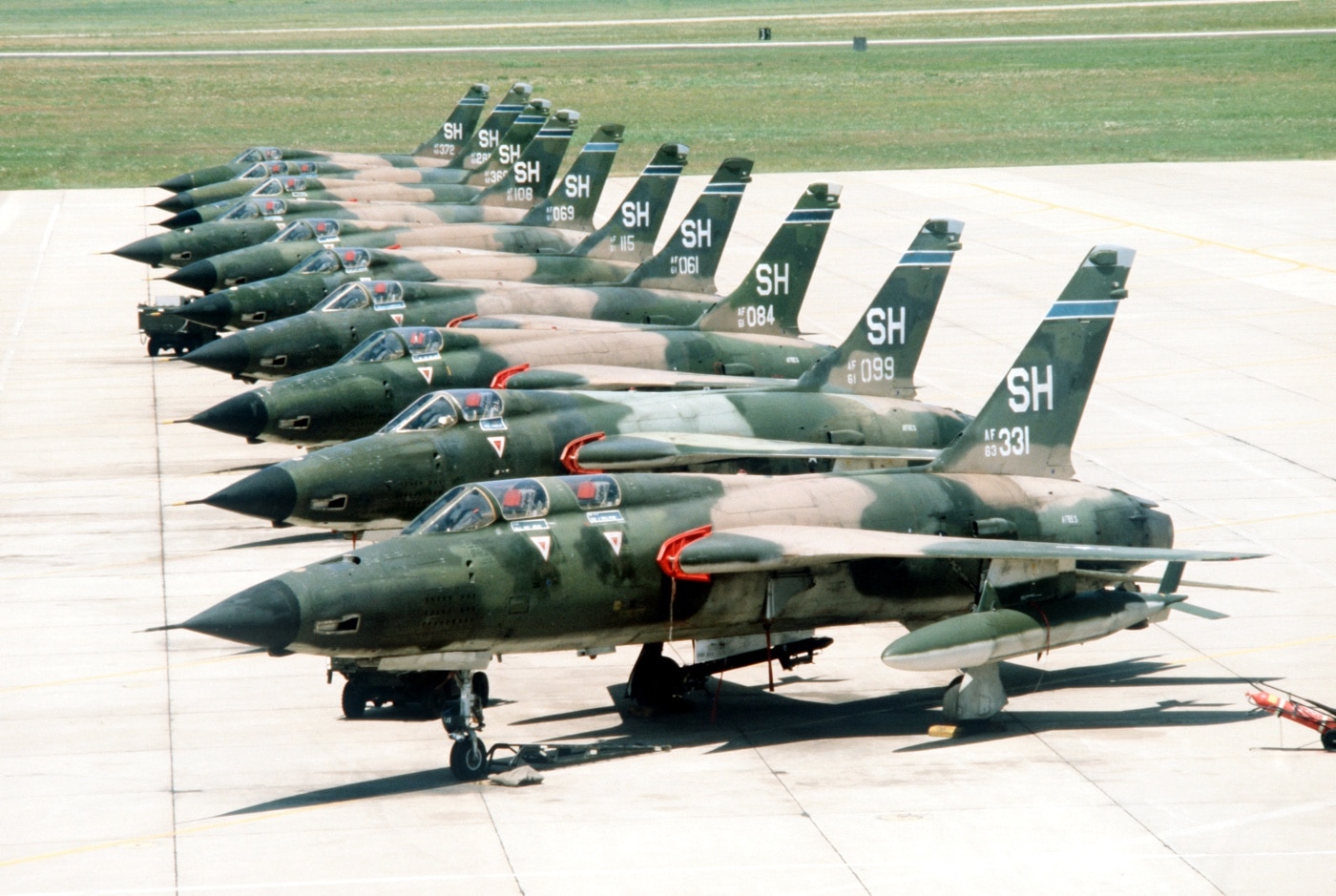
A row of F-105 aircraft of the 507th Tactical Fighter Group parked on the flight line at Tinker AFB in Oklahoma. Image: Rick Diaz/U.S.A.F.
As you might imagine, this was a pretty risky way to make a living.
Of the 833 F-105s produced, 382 airframes were lost over the course of 20,000 combat sorties.
62 of these destroyed aircraft were the result of accidents.
F-105 pilots were credited with 27.5 MiG kills during the war.
The Thud was the only American combat aircraft removed from the theater due to high loss rates.
Maximum speed was 1,210 knots or 1,390 mph at 35,000 feet.
Ammunition capacity was 1,028 rounds or about 10 seconds of continuous fire.
Nuclear payloads included the B28, B43, B57, and B61 thermonuclear weapons.
One of the most striking aspects of the Thuds design was its coke bottle fuselage.
This gave the Thud a certain sultry mystique.
The rakish reversed jest intakes looked cool as well.
F-105D Thunderchief Specifications
Ruminations
In Vietnam, the F-105 was a stopgap.
The Thuds astronomical loss rate reflects this sordid reality.
The single-seat Thunderchiefs were withdrawn from service in SE Asia in 1970.
G-model Wild Weasels continued to serve operationally through the end of the conflict.
The last F-105s were phased out of the Air Force Reserve in February of 1984.
I recall that the landing fighters deployed drogue chutes to assist in braking.
Considering takeoff and landing speeds are on the order of 230 mph, thats not surprising.
These brave aviators laid the foundation for modern air war.




